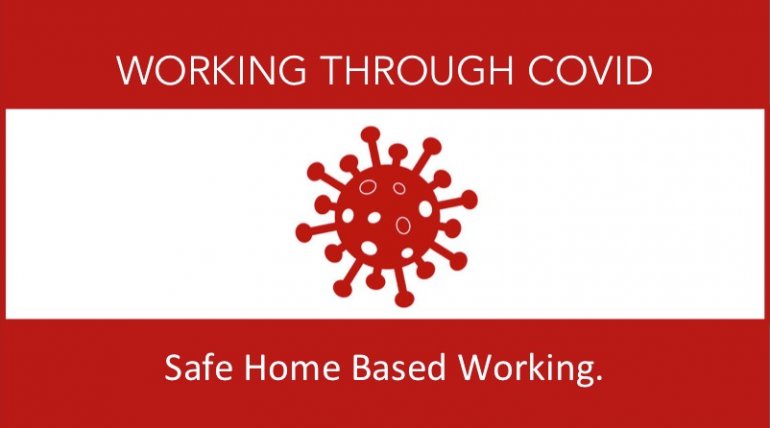
Coronavirus: safe home-based working
PUBLISHED: 20/01/2021
Coronavirus: safe home-based working
Below is the latest guidance and advice from The National Education Union to promote safe home based working.
Widespread home-based working presents a variety of organisational and personal challenges, particularly because of the sudden change in circumstances requiring rapid adaptation.
Employers have a duty to undertake risk assessments for employees while they are at work, including when they are working from home. Although it would not be practical, or safe, for workstations to be inspected by managers, or in many cases, for additional equipment/furniture to be provided, there are ways in which you can protect your health during this difficult time.
The NEU expects school leaders to respect and adhere to the principles set out below which should form part of a risk assessment. Where there remain serious barriers, you should raise with your line manager and discuss with your health and safety rep and NEU colleagues.
Define your space – separate work from home
Setting up a dedicated working area, where possible, will help you to separate your work-life from your home-life. Having a dedicated workspace assists with consciously entering the mental zone for work.
Are you sitting comfortably?
Spending long hours at a poorly set up workstation could leave you with back, neck, hip and knee pain and muscle strains. Make sure you set your workstation up as well as you can in the circumstances and if you need any support then contact your line manager. Sit at a desk or table where possible. Sitting on a bed or sofa may seem relaxing but could lead to musculo-skeletal problems in the longer term.
Try to ensure that you:
- have a chair that is supportive, stable and comfortable (ideally with adjustable height and tilt though this may not be possible)
- use a separate screen or laptop riser if you have one so you’re not looking down whilst you’re typing
- use a separate keyboard, which tilts, and mouse if you can, and don’t hunch over the keyboard
- use a document holder if you have one, positioned to minimise neck movement
- have good lighting above your workstation avoiding glare and reflections on the screen
- Place a laptop/tablet it on a firm surface, not on your lap, at the right height for keying
- have extra back support if pregnant.
Working hours
You may be sharing your home space with other family members and this can, of course, impact on how you are able to work. If you have young children at home for whom you are caring, this may well impact on your working arrangements. If you are sharing childcare responsibilities, it is important to think about how to balance your work and childcare responsibilities. Sometimes this might mean working at different times during the day. It may mean blocking out periods of time to be with children. It is important to discuss your specific working arrangements and any restrictions during this period with your head teacher/line manager. The NEU expects all leaders to be reasonable in their expectations.
Take regular short breaks
Taking regular breaks is essential. Try following the 20-20-20 rule. Every 20 minutes take 20 seconds to look at something that’s at least 20 feet away. Ideally you should get up and walk over to whatever it is you’re looking at so you can stretch your legs and give your eyes a rest. Try to take a break of 5 – 10 minutes every 50 – 60 minutes. Make a cup of coffee, have a chat with a member of your household, or simply walk round your home.
Always make time for lunch away from your workstation
It is important to take a lunch break – get something to eat and drink and try to have time away from your desk. This may be a good time to have a social call with a colleague – compare notes about working from home or just talk about non-work issues. As and when Government guidance allows, take a walk if you can, or if you have one, at least go into your garden or on to your balcony.
Go out for some fresh air
Don’t spend the whole day indoors hunched over your laptop working non-stop. Be sure to plan in some time to go outside each day, before, after or during your working day, as Government guidance allows. Go for a run or a walk if you are able to; or take the dog for a walk.
Socialise with colleagues
Just because you’re not working alongside your colleagues doesn’t mean that you can’t socially interact with them. Make time for the conversations you would usually have in the staffroom. Arrange on-line evening social events.
Remember the days before email…
Communicating via email is quick and easy but it means we lose interaction with people. Before you send an email, ask yourself whether you could have this conversation over the phone. You can always follow up with an email after, to get the best of both worlds.
Know when to stop
It may be tempting to continue working and telling yourself “just another ten minutes”. It could mean that you’re still sat at your workstation two hours later, and this is not good for your wellbeing or your effectiveness.
Schools should have an email protocol. There must be no expectation that just because you are at home you are constantly available or that you will be able to respond within unrealistic deadlines. You should not be expected to respond to emails at evenings and at the weekend. If there is no reasonable protocol in place in your school, discuss with fellow NEU members what you think is reasonable, and then raise collectively with management. For example, you may decide that there should be no expectation to read or reply to emails before 8am and after 5pm on working days. At this stressful time when there is an even greater need to rest and relax it might also be worth having an understanding that work-related emails and group messages, eg on WhatsApp, will not be sent by anyone outside of the set times.
At the end of your working day it is good practice to put your phone away and switch off your computer.
Comments
Be part of the conversation by adding a comments below
No comments have been added yet








